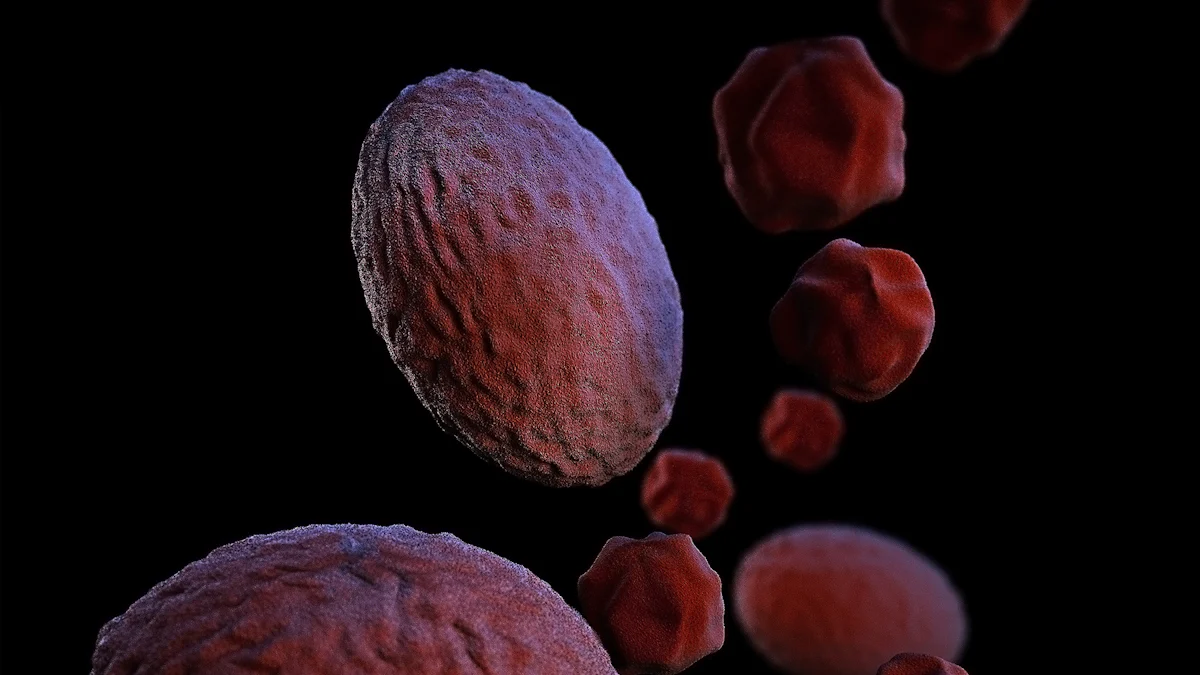
Understanding Graves’ Disease
What is Graves’ Disease?
Definition and Overview
Graves’ disease is an autoimmune disorder. The immune system attacks the thyroid gland. This attack causes the thyroid to produce excessive hormones. These hormones regulate metabolism and energy use in the body. Hyperthyroidism results from this overproduction. Symptoms include heat intolerance, weight loss, and nervousness.
Historical Background
Robert Graves first described Graves’ disease in 1835. He was an Irish physician. His work laid the foundation for understanding this condition. Graves’ disease has been studied extensively since then. Medical advancements have improved diagnosis and treatment.
Significance and Prevalence
Statistics and Demographics
Graves’ disease affects about 1 in 200 people in the United States. Women are more likely to develop this condition. The age group most affected ranges from 30 to 50 years old. Graves’ disease can occur at any age. Both men and women can develop it, but women face a higher risk.
Impact on Quality of Life
Graves’ disease significantly impacts quality of life. Symptoms can be debilitating. Patients often experience fatigue and anxiety. Eye problems, known as Graves’ ophthalmopathy, can occur. These symptoms affect daily activities and overall well-being. Proper management improves life quality for those affected.
Causes of Graves’ Disease

Genetic Predisposition
Role of Family History
Family history plays a significant role in Graves’ disease. Many patients have relatives with similar thyroid conditions. This pattern suggests a hereditary component. Researchers believe that genes passed down through generations increase susceptibility. Family members should remain vigilant for symptoms.
Specific Genes Involved
Certain genes contribute to the development of Graves’ disease. The HLA gene complex, located on chromosome 6, influences immune system function. Variations in this gene complex can trigger autoimmune responses. Another gene, TSHR, affects thyroid-stimulating hormone receptors. Mutations in TSHR can lead to excessive hormone production. Understanding these genetic factors helps in identifying at-risk individuals.
External Triggers
Environmental Factors
Environmental factors can initiate Graves’ disease in genetically predisposed individuals. Viral and bacterial infections often act as triggers. These infections can disrupt immune system balance. Exposure to high levels of iodine also impacts thyroid function. Some regions with iodine-rich diets report higher incidences of the disease. Stressful life events may exacerbate symptoms.
Lifestyle Influences
Lifestyle choices affect the likelihood of developing Graves’ disease. Smoking increases the risk of Graves’ ophthalmopathy. Smokers with Graves’ disease often experience more severe eye symptoms. Poor diet and lack of exercise contribute to overall health decline. Maintaining a balanced diet and regular physical activity supports thyroid health. Reducing stress through mindfulness and relaxation techniques benefits those at risk.
Symptoms and Complications

Common Symptoms
Physical Symptoms
Graves’ disease presents various physical symptoms. Patients often experience rapid heartbeat and palpitations. Heat intolerance and excessive sweating occur frequently. Weight loss happens despite normal or increased appetite. Muscle weakness and tremors affect daily activities. Enlarged thyroid gland, known as goiter, becomes noticeable in many cases.
Psychological Symptoms
Graves’ disease also impacts mental health. Anxiety and irritability become common issues. Patients may suffer from insomnia and restlessness. Depression and mood swings often accompany the condition. Cognitive difficulties, such as trouble concentrating, arise in some individuals.
Complications
Thyroid Storm
Thyroid storm represents a severe complication of Graves’ disease. This life-threatening condition involves a sudden and extreme increase in thyroid hormone levels. Symptoms include high fever and rapid heart rate. Severe agitation and confusion occur during a thyroid storm. Immediate medical intervention becomes crucial to prevent fatal outcomes.
Long-term Health Risks
Graves’ disease poses several long-term health risks. Persistent hyperthyroidism can lead to heart problems. Atrial fibrillation and congestive heart failure develop in some patients. Bone health deteriorates due to prolonged hormone imbalance. Osteoporosis and fractures become more likely. Untreated Graves’ disease may also cause muscle wasting and weakness. Regular monitoring and treatment help mitigate these risks.
Treatment Options
Medications
Antithyroid Drugs
Doctors often prescribe antithyroid drugs to manage Graves’ disease. These medications reduce thyroid hormone production. Methimazole and propylthiouracil are common choices. Patients usually take these drugs for several months. Regular blood tests monitor hormone levels. Adjustments in dosage may be necessary. Side effects can include rash and liver issues.
Beta Blockers
Beta blockers help control symptoms of hyperthyroidism. These drugs do not affect hormone levels. Instead, they manage symptoms like rapid heartbeat and tremors. Propranolol and atenolol are frequently used. Patients often experience quick relief. Doctors may prescribe beta blockers alongside antithyroid drugs. Monitoring for side effects, such as fatigue and dizziness, is important.
Radioiodine Therapy
Procedure Overview
Radioiodine therapy targets overactive thyroid cells. Patients ingest a radioactive iodine capsule or liquid. The thyroid gland absorbs the iodine. Radioactivity destroys excess thyroid tissue. This treatment reduces hormone production. The procedure is usually simple and outpatient. Most patients return to normal activities quickly.
Effectiveness and Side Effects
Radioiodine therapy effectively treats Graves’ disease. Many patients achieve normal thyroid function. Some may develop hypothyroidism. Lifelong hormone replacement therapy may be necessary. Side effects can include neck tenderness and dry mouth. Rarely, patients experience changes in taste or smell. Regular follow-up appointments ensure proper management.
Surgery
Types of Surgery
Surgery offers another treatment option for Graves’ disease. Total thyroidectomy removes the entire thyroid gland. Subtotal thyroidectomy removes part of the gland. Surgeons choose the best approach based on patient needs. Surgery provides a permanent solution. Patients no longer produce excessive thyroid hormones.
Risks and Benefits
Surgery carries risks and benefits. Benefits include immediate symptom relief. Patients avoid long-term medication use. Risks involve potential complications. These can include bleeding and infection. Damage to vocal cords or parathyroid glands may occur. Experienced surgeons minimize these risks. Post-surgery, patients often need hormone replacement therapy. Regular monitoring ensures optimal health outcomes.
Managing Related Conditions
Graves’ Ophthalmopathy
Symptoms and Diagnosis
Graves’ ophthalmopathy affects the eyes. Patients often experience eye bulging and redness. Light sensitivity and double vision may occur. Swelling around the eyes can cause discomfort. Eye movement restrictions lead to pain. Doctors diagnose this condition through physical exams. Imaging tests like CT scans provide detailed views. Blood tests measure thyroid hormone levels. Early diagnosis helps manage symptoms effectively.
Treatment Options
Several treatments address Graves’ ophthalmopathy. Artificial tears relieve dryness and irritation. Steroids reduce inflammation and swelling. Radiation therapy targets affected tissues. Severe cases may require surgery. Orbital decompression surgery creates more space for the eyes. Eye muscle surgery corrects double vision. Regular follow-ups ensure treatment effectiveness. Lifestyle changes also support eye health.
Lifestyle and Support
Diet and Exercise
A balanced diet supports thyroid health. Foods rich in vitamins and minerals benefit patients. Selenium and zinc play crucial roles. Leafy greens and nuts provide these nutrients. Regular exercise improves overall well-being. Physical activity reduces stress levels. Yoga and meditation promote relaxation. Adequate sleep enhances recovery. Avoiding smoking benefits thyroid function. Hydration remains essential for bodily functions.
Support Groups and Counseling
Support groups offer emotional assistance. Sharing experiences with others provides comfort. Group members exchange coping strategies. Professional counseling addresses mental health issues. Therapists help manage anxiety and depression. Cognitive-behavioral therapy proves effective. Family involvement strengthens support systems. Educational resources increase understanding. Online forums connect patients globally. Continuous support improves life quality.
Early diagnosis of Graves’ disease remains crucial. Regular medical consultations ensure proper monitoring and treatment. Effective management can lead to a good quality of life. Patients can live healthy lives with appropriate care. Encouragement and support play vital roles in coping with the condition. Hope and positivity can greatly impact mental well-being.
 Press Coffee
Press Coffee